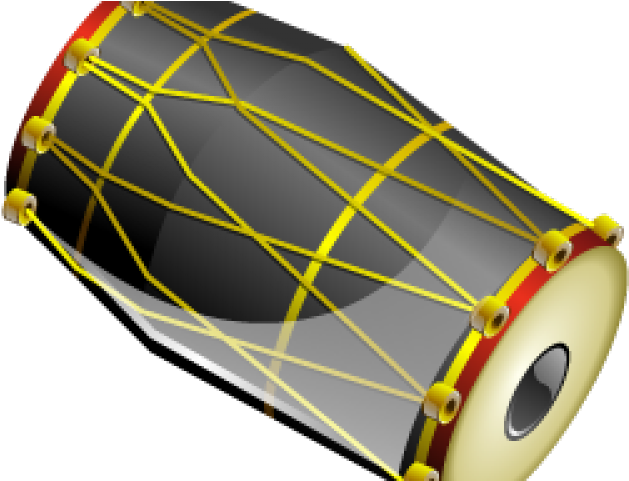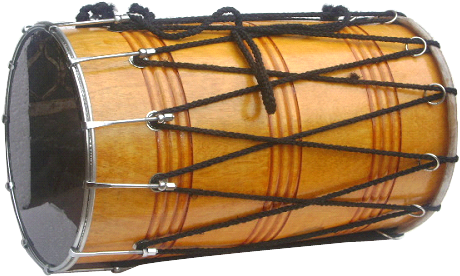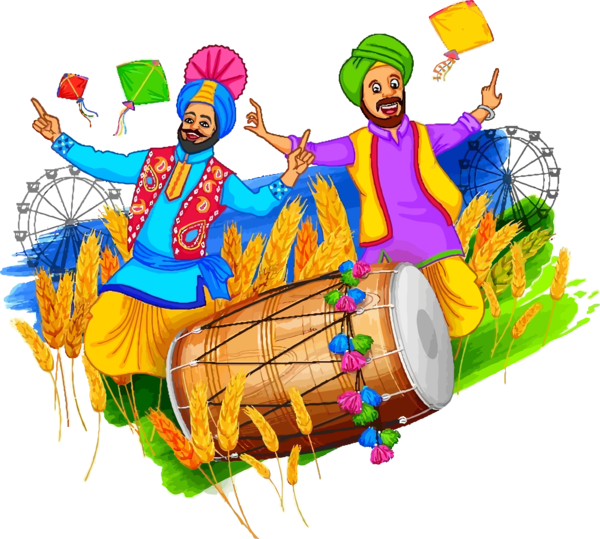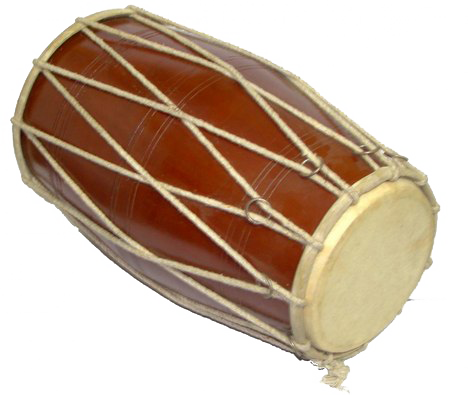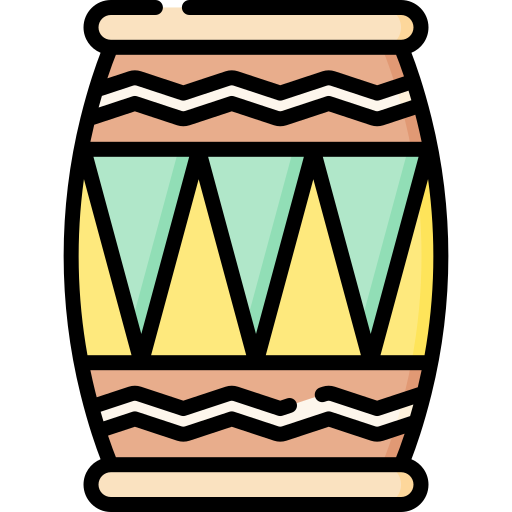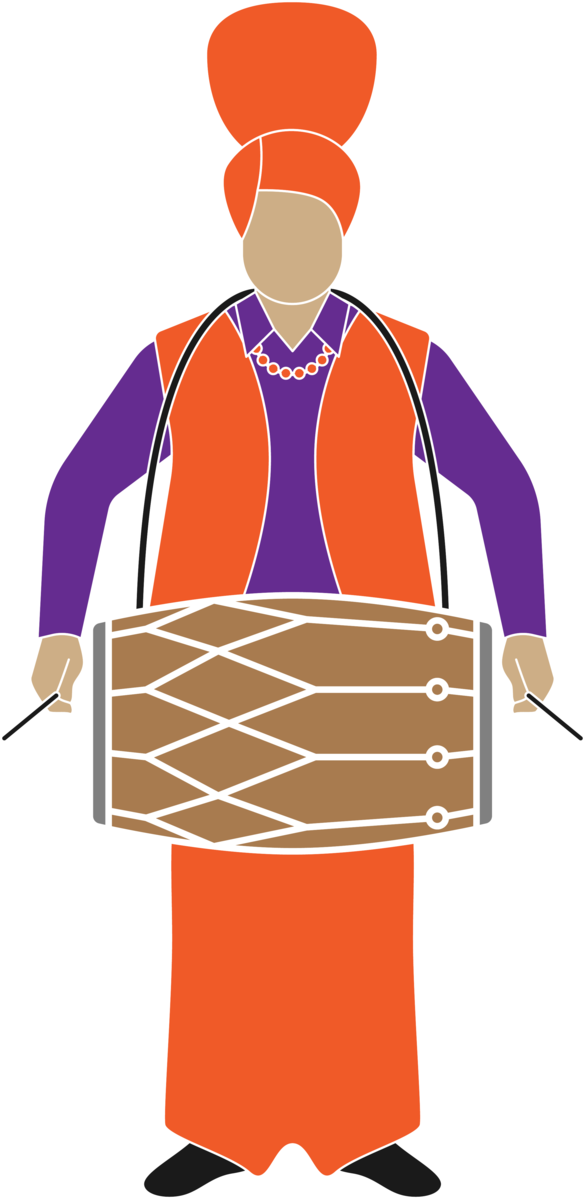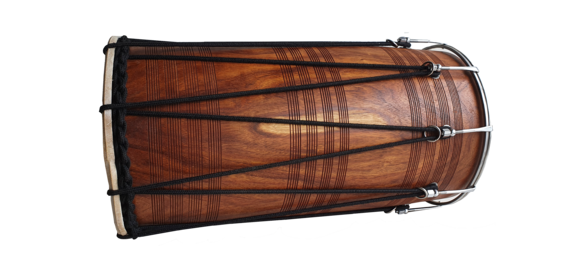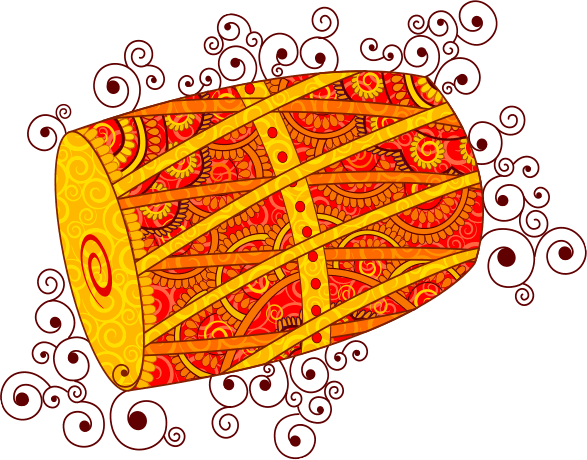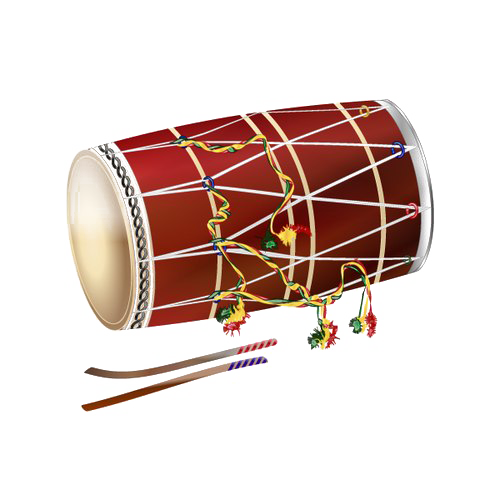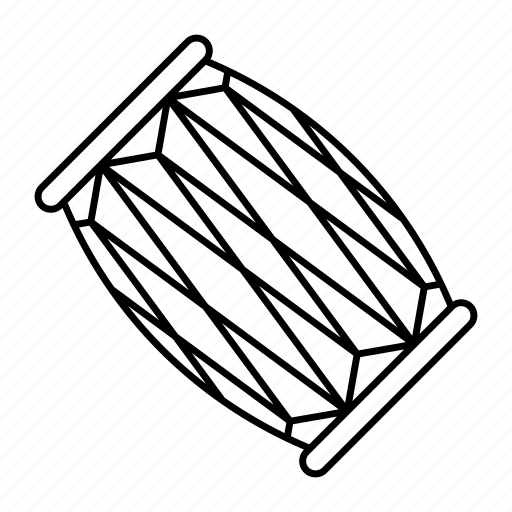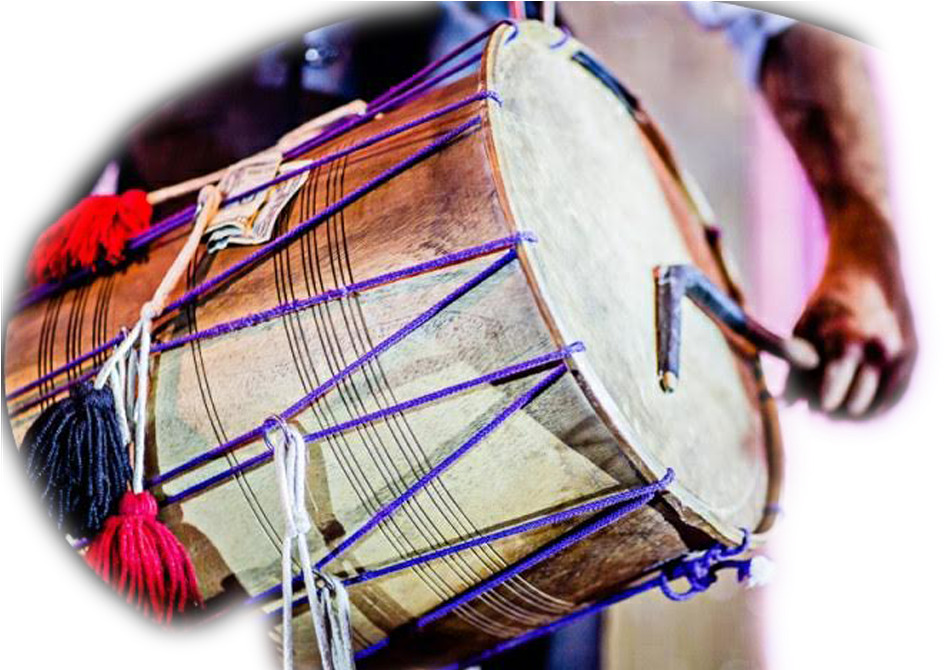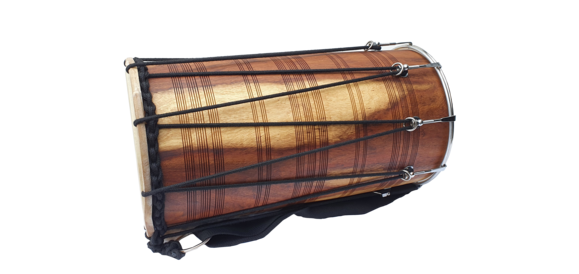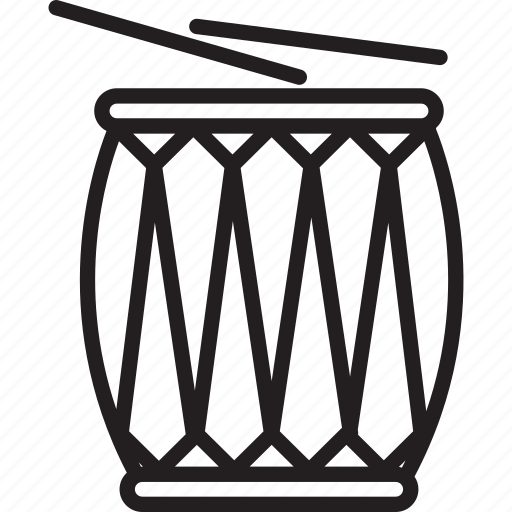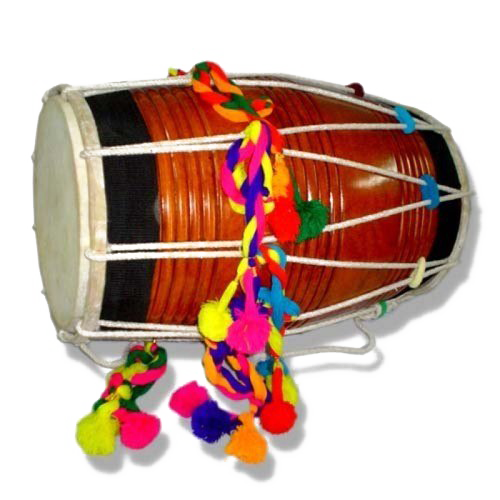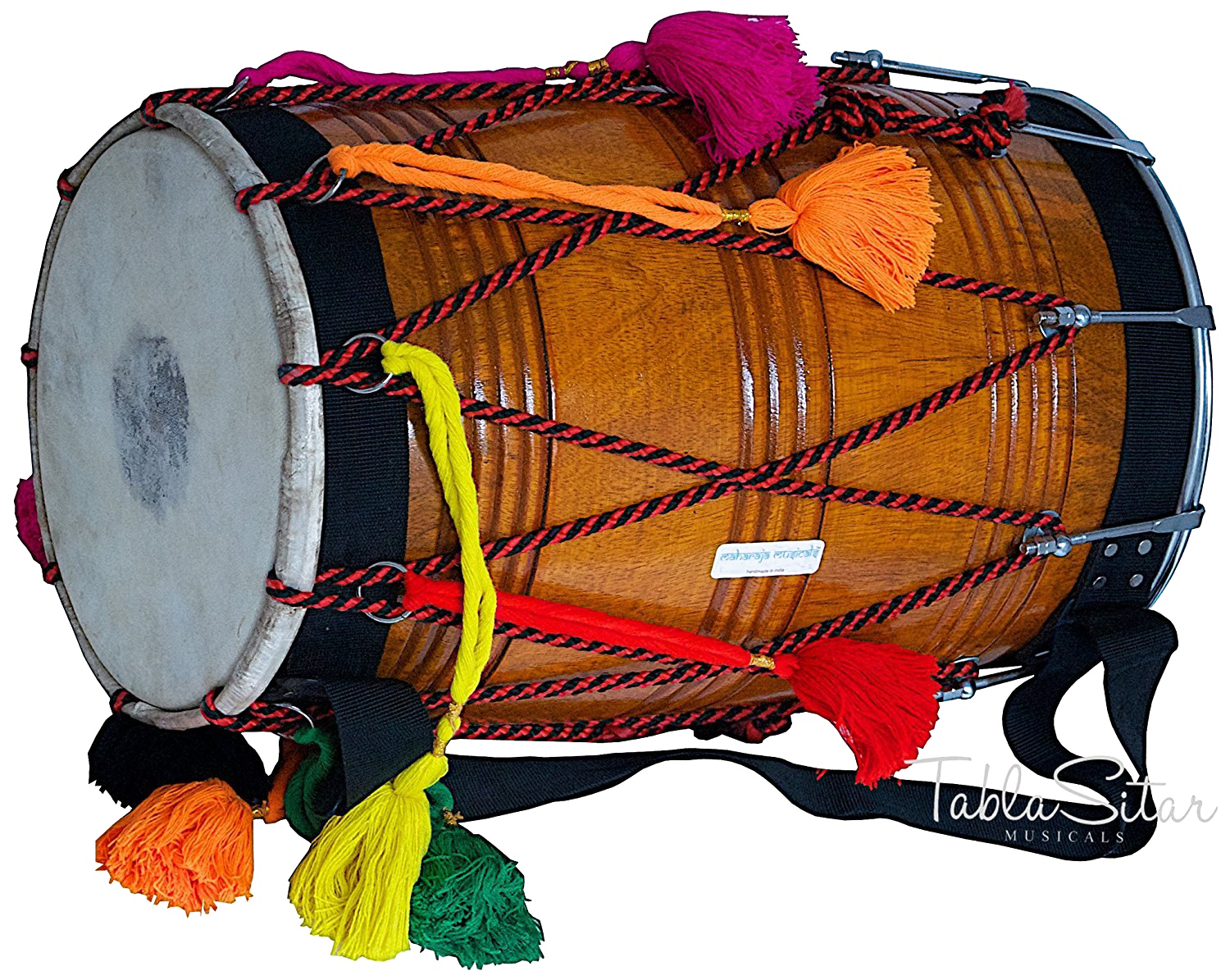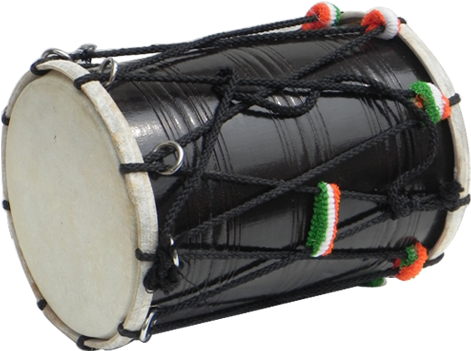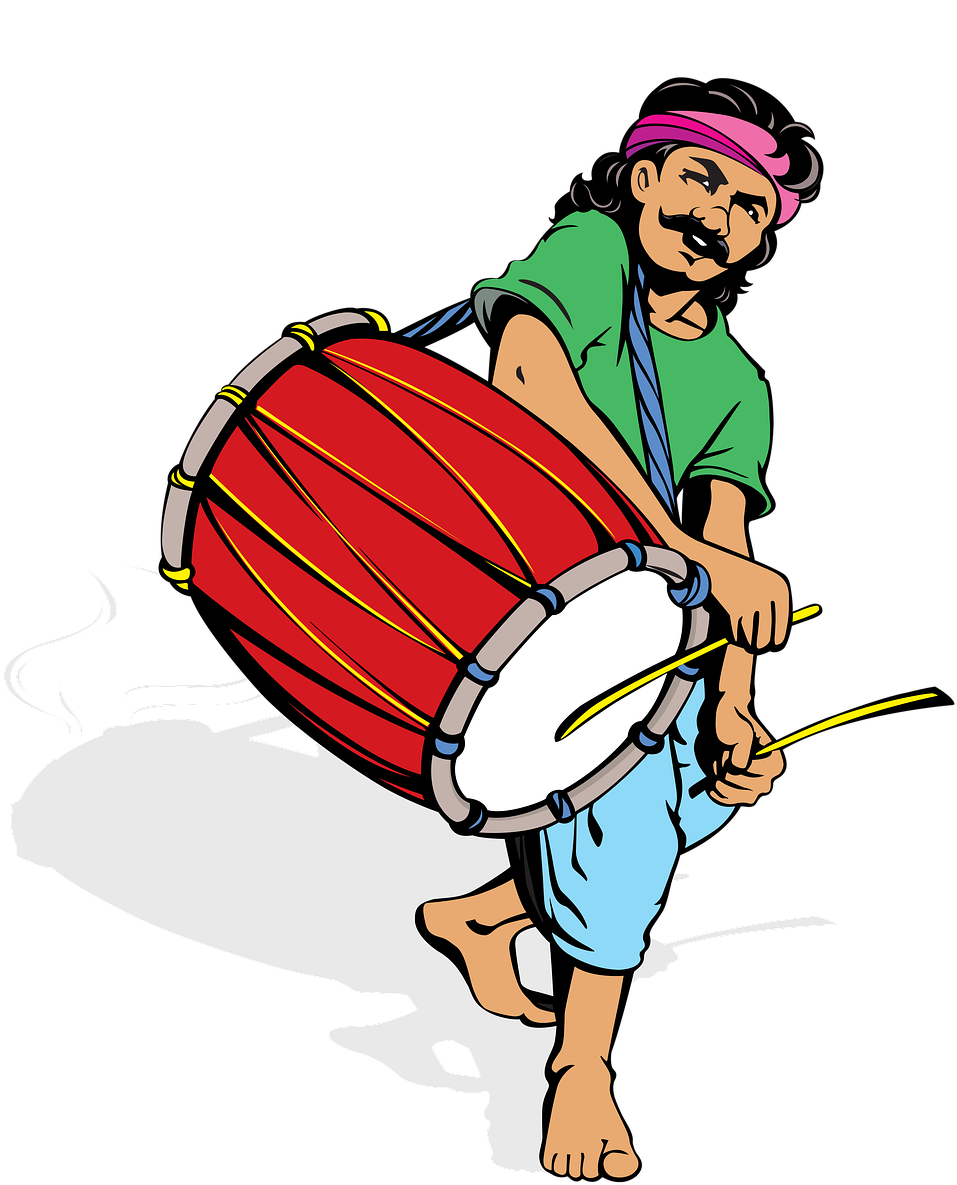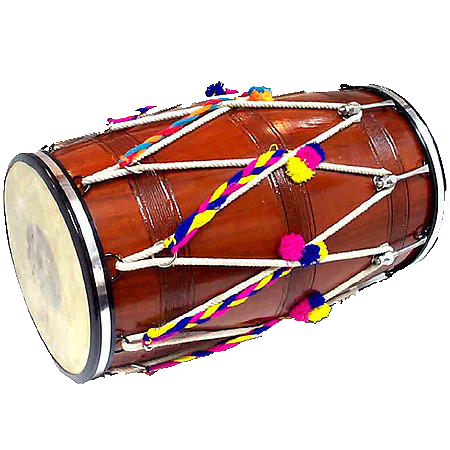Download top and best high-quality free Dhol PNG Transparent Images backgrounds available in various sizes. To view the full PNG size resolution click on any of the below image thumbnail.
License Info: Creative Commons 4.0 BY-NC
Dhol can refer to any of a variety of related double-headed drums that are extensively used across the Indian subcontinent, with regional variations. Punjab, Haryana, Delhi, Kashmir, Sindh, Assam Valley, Uttarakhand, West Bengal, Odisha, Gujarat, Maharashtra, Konkan, Goa, Karnataka, Rajasthan, Bihar, Jharkhand, and Uttar Pradesh are among its main distribution regions in India, Bangladesh, and Pakistan. The range goes all the way to eastern Afghanistan in the west. The dholak or dholki is a comparable instrument.
The dhol is a two-sided barrel drum used mostly as a background instrument in regional music. The name dhol is used in qawwali music to designate a comparable, but smaller drum that is used with the smaller tabla to replace the left hand tabla drum.
The name dhol is used in qawwali music to designate a comparable, but smaller drum that is used with the smaller tabla to replace the left hand tabla drum. The average drum size varies somewhat from area to region. The dhol stays huge and hefty in Punjab to provide the desired powerful bass. Dhols are built of various woods and materials in other places and come in a variety of forms and sizes (fiberglass, steel, plastic).
The drum is made up of a wooden barrel with animal hide or synthetic skin stretched across the open ends and completely covering them. With a fastening mechanism made up of interwoven ropes or nuts and bolts, these skins may be stretched or relaxed.
The pitch of the drum sound is gently altered by tightening or loosening the skins. One end’s stretched skin is thicker and generates a deep, low frequency (higher bass) sound, while the other end’s stretched skin is thinner and produces a higher frequency sound. Treble skins made of synthetic or plastic are prevalent on dhols.
The dhol is played with two wooden sticks, which are commonly constructed of wood, cane, or wickers cane. The dagga, or bass side of the instrument, is played using a stick called a dagga in Punjabi. Traditionally, the Dhol player would go out and find a branch of Tali (oak or mahogany) that was naturally bent at that angle and use it as the Dagga (Bass Stick).
Because of the goat skin, the bent stick is necessary. Because the stick is as thin as 80-100gsm paper, it must be bent to avoid piercing the skin. The bass stick, or Dagga, is the thicker of the two, with the end that strikes the instrument curved in an eighth- or quarter-circular arc. The tihli, on the other hand, is a much thinner and more flexible stick that is used to play the instrument’s upper notes.
With a strap made of woven cotton, the dhol is draped over the shoulder or, more rarely, around the player’s neck. In some circumstances, the hardwood barrel’s surface is adorned with etched designs and, in other cases, paint.
On the Punjabi dhol in the pre-Partition era, dozens of rhythms were performed that matched to distinct roles. Recent generations of dhol musicians, however, have grown unfamiliar with many of these due to the loss or elimination of various traditional activities. Simultaneously, the emergence of folkloric staged bhangra dance in Punjab encouraged the creation of a slew of new bhangra-specific rhythms.
Download Dhol PNG images transparent gallery.
- Dhol PNG Image File
Resolution: 629 × 481
Size: 135 KB
Image Format: .png
Download
- Dhol PNG Image HD
Resolution: 460 × 276
Size: 311 KB
Image Format: .png
Download
- Dhol PNG Image
Resolution: 600 × 539
Size: 420 KB
Image Format: .png
Download
- Dhol PNG Images HD
Resolution: 468 × 395
Size: 211 KB
Image Format: .png
Download
- Dhol PNG Images
Resolution: 512 × 512
Size: 38 KB
Image Format: .png
Download
- Dhol PNG Photo
Resolution: 585 × 1199
Size: 120 KB
Image Format: .png
Download
- Dhol PNG Picture
Resolution: 579 × 274
Size: 200 KB
Image Format: .png
Download
- Dhol PNG
Resolution: 587 × 460
Size: 66 KB
Image Format: .png
Download
- Dhol Transparent
Resolution: 500 × 500
Size: 185 KB
Image Format: .png
Download
- Dhol
Resolution: 512 × 512
Size: 40 KB
Image Format: .png
Download
- Dhol Background PNG
Resolution: 946 × 670
Size: 1540 KB
Image Format: .png
Download
- Dhol No Background
Resolution: 579 × 274
Size: 163 KB
Image Format: .png
Download
- Dhol PNG Background
Resolution: 512 × 512
Size: 35 KB
Image Format: .png
Download
- Dhol PNG Clipart
Resolution: 500 × 500
Size: 279 KB
Image Format: .png
Download
- Dhol PNG Cutout
Resolution: 1500 × 1195
Size: 2786 KB
Image Format: .png
Download
- Dhol PNG File
Resolution: 471 × 351
Size: 302 KB
Image Format: .png
Download
- Dhol PNG Free Image
Resolution: 957 × 1185
Size: 321 KB
Image Format: .png
Download
- Dhol PNG HD Image
Resolution: 450 × 450
Size: 244 KB
Image Format: .png
Download
